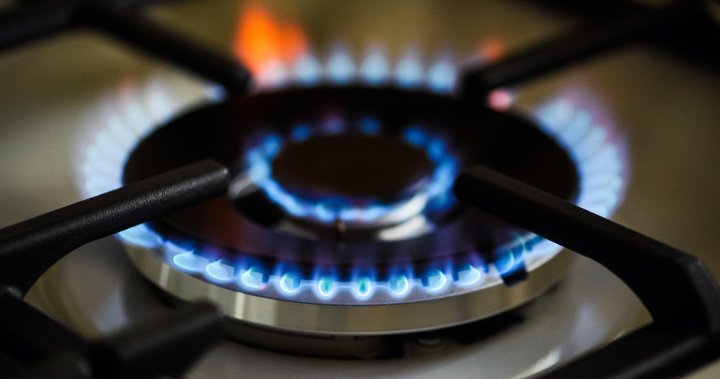U.S. eyes ban on gas stoves due to health risks. Should Canada do the same? – National | Globalnews.ca

The U.S. Consumer Product Safety Commission is looking to take action on the risks posed by gas stoves — which have been shown to leak pollutants into the air that can cause respiratory illness and cancer, according to recent studies.
Gas appliances have faced increased scrutiny in recent years for their environmental impact, with states such as California phasing out gas furnaces and New York banning new hookups for gas stoves in an effort to reduce carbon emissions. But increasingly, scientists and regulatory bodies have been scrutinizing the health risk posed by these cooktops.
Read more:
Gas stoves can leak cancer-causing chemical, even when turned off, study shows
Read next:
‘It’s not going to be easy’: B.C.-born former actor shares hopes for detox and recovery
Last month, a bombshell study from the International Journal of Environmental Research and Public Health found that about 12.7 per cent of childhood asthma cases in the U.S. could be linked to gas stove use.
“This is a hidden hazard,” said Richard Trumka Jr., the U.S. Consumer Product Safety Commissioner, in an interview with Bloomberg. “Any option is on the table. Products that can’t be made safe can be banned.”
Trumka noted that the Consumer Product Safety Commission is planning to open public consultations on the dangers posed by gas stoves later this winter. The agency is considering either an outright ban on the manufacture and import of gas stoves, or setting emissions standards for the appliances.
There’s little doubt that gas stoves leak air pollutants such as methane, nitrogen dioxide and fine particulate matter — but how dangerous are these appliances, really?
One pediatrician from B.C. is skeptical that 12.7 per cent of childhood asthma cases can be reliably tied to gas stove use.
Read more:
B.C. pediatrician questions new research linking gas stoves to childhood asthma
Read next:
B.C. pediatrician questions new research linking gas stoves to childhood asthma
“Asthma is a multifactorial disease. It’s a disease we’re still studying because it’s so complex,” said Ran Goldman, a pediatrics professor at the University of British Columbia. “There may be a role to reduce emissions of gas, whether within the house or outside, in order to prevent some children with asthma, but it’s really hard to grasp that 13 per cent of children are having asthma just because of this exposure to gas emission from stoves at home.”
Goldman also said there are steps families with gas stoves can take, which don’t include trashing their cooktop, including improving air ventilation while cooking. Health Canada noted in a statement to Global News that “the use of kitchen exhaust fans and ventilation are effective in reducing indoor air pollutants generated through cooking with gas stoves.”
Consumer organizations like the Association for Home Appliance Manufacturers also pointed to increasing household ventilation as a measure that regulatory bodies should consider before an outright ban on the appliance.

Meanwhile, Tara Kahan, a Canada research chair in environmental analytical chemistry and an associate professor at the University of Saskatchewan, has been sounding the alarm on gas stoves for five years now.
In 2018, Kahan and a team of researchers from Syracuse University and York University set out to analyze what kinds of indoor pollution homeowners are exposed to in the course of their daily life. For two months, the team took air measurements inside a detached home with gas appliances.
“The focus wasn’t on gas stoves but there happened to be one in the house. And we pretty quickly realized that the gas stove was the story,” Kahan told Global News.
Read more:
N.S. woman dies after waiting 7 hours in hospital ER, family demands answers
Read next:
How many health-care workers does Ontario need? The province won’t say
Even though the household also had a gas fireplace, Kahan said the gas stove was by far the biggest polluter. During cooking, levels of nitrogen oxides peaked at 20 to 100 times higher than usual, and lingered for a long time afterwards.
“Whenever the people in the family cooked with the gas stove, the levels of these nitrogen oxides shot up to quite high levels, and stayed high even after the gas stove was turned off. So it could take hours to get back down to the levels that we saw before the cooking started.”
Nitrogen oxides released into the home can trigger respiratory diseases, according to the CDC and the American Lung Association. A 2022 Stanford paper also found that just a few minutes of gas stove use, without a ventilator hood, can cause nitrogen dioxide levels to surpass health standards.
Read more:
U.S. flights ‘gradually’ resume after outage; minister says some Canadian flights impacted
Read next:
Edmonton libraries spent $1.5 million in 2022 dealing with results of social disorder: report
Kahan acknowledged that ventilator hoods can reduce indoor pollution while cooking, but she said she believes Canadians aren’t using them long enough to truly see the benefits.
“The hood was most effective when we ran it half an hour to an hour after the cooking stopped. So yes, using hoods is really effective, but I think something that’s important to keep in mind is that most people don’t use their hood the way they’re supposed to because they are loud.”
As a researcher who has seen firsthand the kind of pollution that gas stoves can leak, even Kahan said she doesn’t use her ventilator hood for as long as she should.
“I know how I’m supposed to use it,” she said. “And I want to because I know, I’ve seen, what’s coming out of the stove. But I often don’t use it the way I should just because it’s really, really annoying.”
Read more:
Mysterious antennas keep popping up in Utah’s foothills and no one knows why
Read next:
Ontario health minister defends nursing compensation despite internal Bill 124 documents
Health Canada did not respond to a Global News question about whether it is considering further regulations on gas stoves. The agency did say that it has “conducted studies to assess the level of pollutants derived from the use of gas cooktop stoves. This information was used to develop Health Canada’s Residential Indoor Air Quality Guidelines.”
The agency also noted that it has updated a 2021 Factsheet with “strategies to help reduce pollutant levels” while cooking. It suggests “using back burners instead of front burners; opening windows while cooking; and running the fan in your furnace or ventilation system, if available.”
For families who want to switch away from gas cooking but can’t afford a whole new stove, Kahan suggested buying one induction cooking element.
“Often we do make one-pot meals, right? So you can actually reduce the amount that you use your gas stove, like quite a bit by just buying a standalone induction or electric burner,” she said.
— With files from Elizabeth McSheffrey and Travis Prasad
© 2023 Global News, a division of Corus Entertainment Inc.
For all the latest health News Click Here



